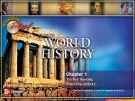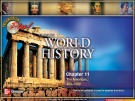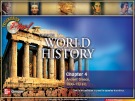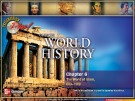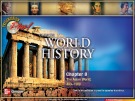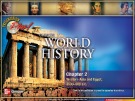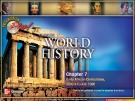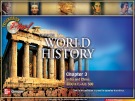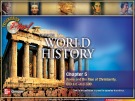
Lecture Glencoe world history
-
The first humanlike creatures appeared in Africa four million years ago. Early humans left no written records. Without such records, archaeologists and anthropologists have had to rely on fossils, artifacts, and skeletal remains to develop theories about their lives. Researchers have concluded that the earliest humans lived as hunters and gatherers and focused on basic needs. Only millions of years later did they develop the skills and tools necessary to engage in agriculture and to build the first civilizations.
 87p
87p  tangtuy05
tangtuy05
 01-04-2016
01-04-2016
 75
75
 10
10
 Download
Download
-
The diverse geography of the Americas resulted in the emergence of many varied and highly advanced civilizations. The following will be discussed in this chapter: The peoples of North America, early civilizations in Mesoamerica, early civilizations in South America.
 89p
89p  tangtuy05
tangtuy05
 01-04-2016
01-04-2016
 70
70
 12
12
 Download
Download
-
Early Greek civilization consisted of many small, independent city-states. Trade led to Greek colonies, and Greek civilization gradually spread throughout the Mediterranean world. This chapter includes contents: Early civilizations in Greece, the Greek City-States, classical Greece, the culture of Classical Greece, Alexander and the Hellenistic Era.
 161p
161p  tangtuy05
tangtuy05
 01-04-2016
01-04-2016
 86
86
 11
11
 Download
Download
-
The religion of Islam arose in the Arabian Peninsula and gave birth to an Arab empire and a rich civilization. This chapter includes contents: The rise of Islam, the Arab empire and its Successors, Islamic civilization, the culture of Islam.
 134p
134p  tangtuy05
tangtuy05
 01-04-2016
01-04-2016
 55
55
 10
10
 Download
Download
-
The years from 400 to 1500 in Asia were marked by periods of invasions and civil wars, interspersed with periods of unification, expanding trade, and economic prosperity. The topics discussed in this chapter are: China reunified, the Mongols and China, early Japan and Korea, India after the Guptas, civilization in southeast Asia.
 149p
149p  tangtuy05
tangtuy05
 01-04-2016
01-04-2016
 64
64
 10
10
 Download
Download
-
In the High Middle Ages, Europe saw explosive urban growth, a revival of trade, and an emboldened Catholic Church. Yet catastrophic setbacks followed in the form of plague, economic collapse, and war. Christianity remained a focus of European life, but centuries of confrontation with the monarchies left the Church weakened.
 145p
145p  tangtuy05
tangtuy05
 01-04-2016
01-04-2016
 56
56
 10
10
 Download
Download
-
Chapter 2 describes the rise of civilizations in a region stretching from the Persian Gulf to Egypt and from Asia Minor to central Asia. In this chapter, the following content will be discussed: Civilization begins in Mesopotamia, Egyptian civilization, new centers of Civilization, the rise of new empires.
 150p
150p  tangtuy05
tangtuy05
 01-04-2016
01-04-2016
 55
55
 9
9
 Download
Download
-
In Africa, as in other parts of the world, civilization emerged in areas where farming was mastered. Some African civilizations later became wealthy by trading ivory, gold, iron, salt, and other goods. Migration and the spread of Islam were also important in the development of African societies.
 109p
109p  tangtuy05
tangtuy05
 01-04-2016
01-04-2016
 54
54
 9
9
 Download
Download
-
A new European civilization emerged in which monarchs competed for supremacy with the nobility and the Roman Catholic Church. The Byzantine Empire became the seat of the Eastern Orthodox Church and developed its own unique civilization.
 149p
149p  tangtuy05
tangtuy05
 01-04-2016
01-04-2016
 63
63
 9
9
 Download
Download
-
In India, small kingdoms gave way to a series of empires that unified the region and took advantage of India's position along major trade routes. Similarly, ancient Chinese dynasties unified the large population and expanded the Chinese empire. This chapter includes contents: Early civilizations in India, new empires in India, early Chinese civilizations, rise and fall of Chinese empires.
 157p
157p  tangtuy05
tangtuy05
 01-04-2016
01-04-2016
 60
60
 8
8
 Download
Download
-
Ancient Rome ruled the Mediterranean and developed a system of law and justice that is still recognized today. Increasing internal instability eventually transformed the Roman Republic into the Roman Empire. Weakened by internal unrest and plagued by invaders, Rome collapsed in 410 A.D.
 150p
150p  tangtuy05
tangtuy05
 01-04-2016
01-04-2016
 62
62
 8
8
 Download
Download
CHỦ ĐỀ BẠN MUỐN TÌM









